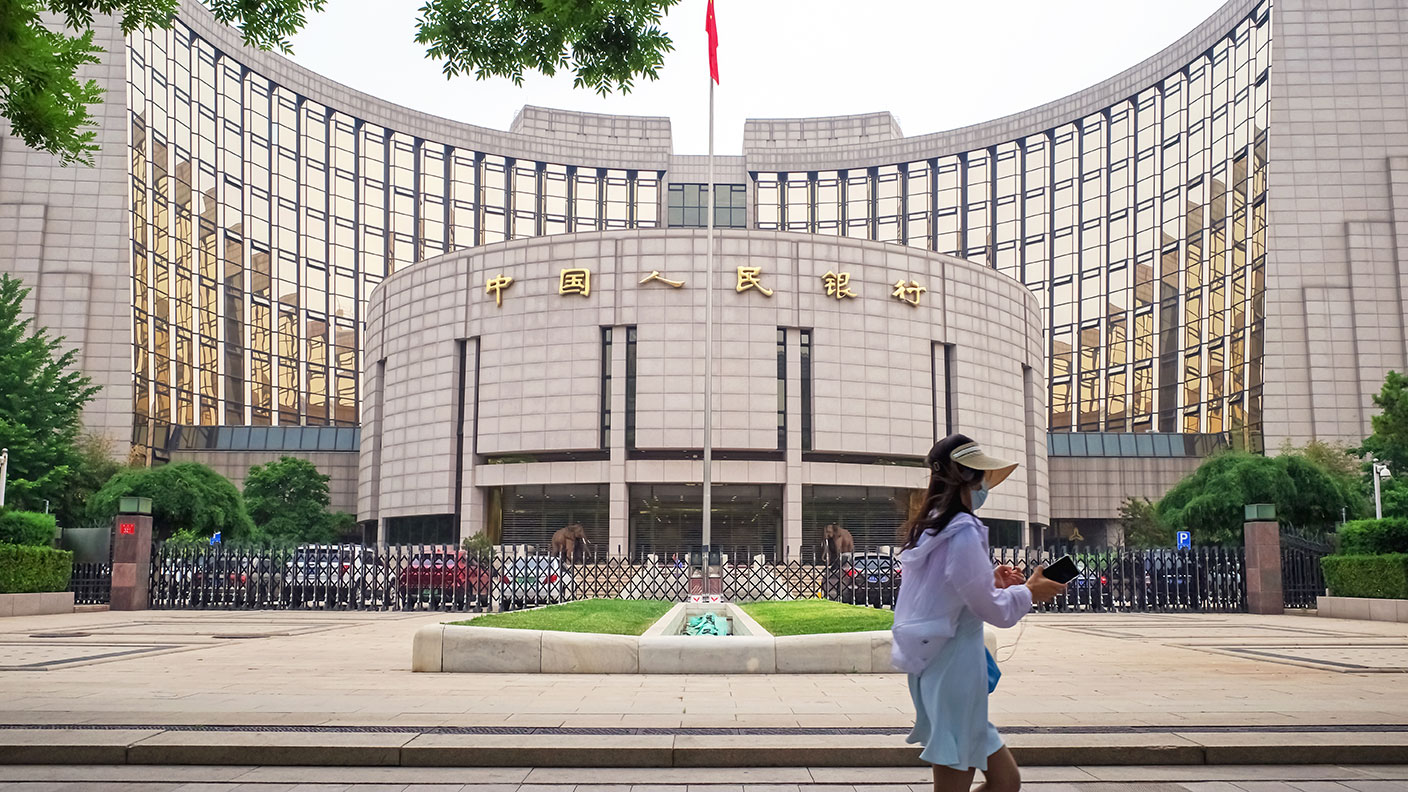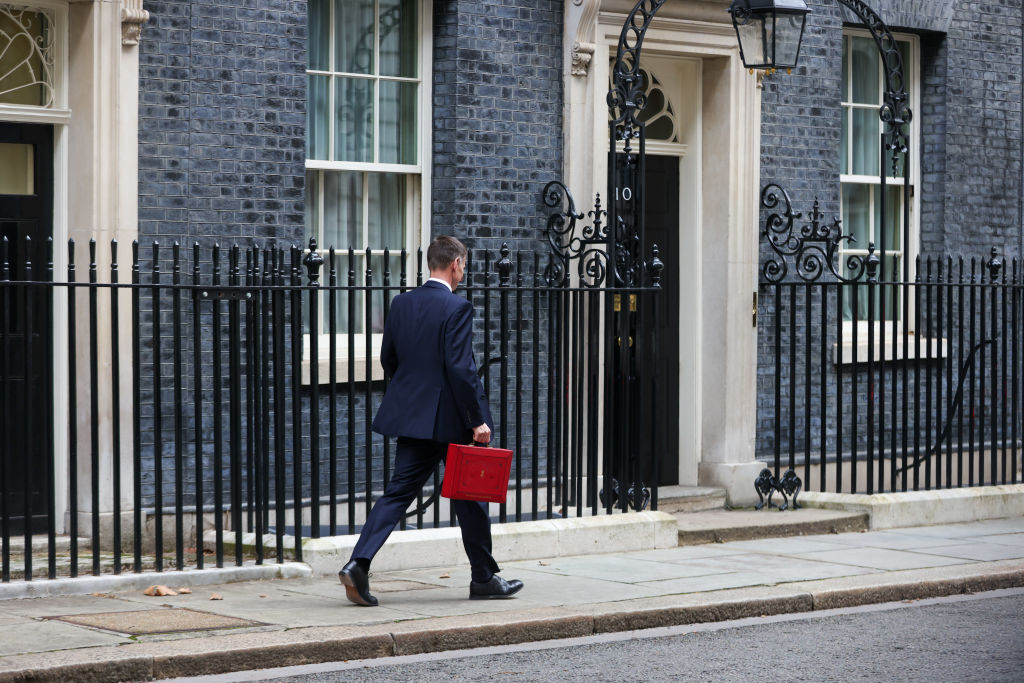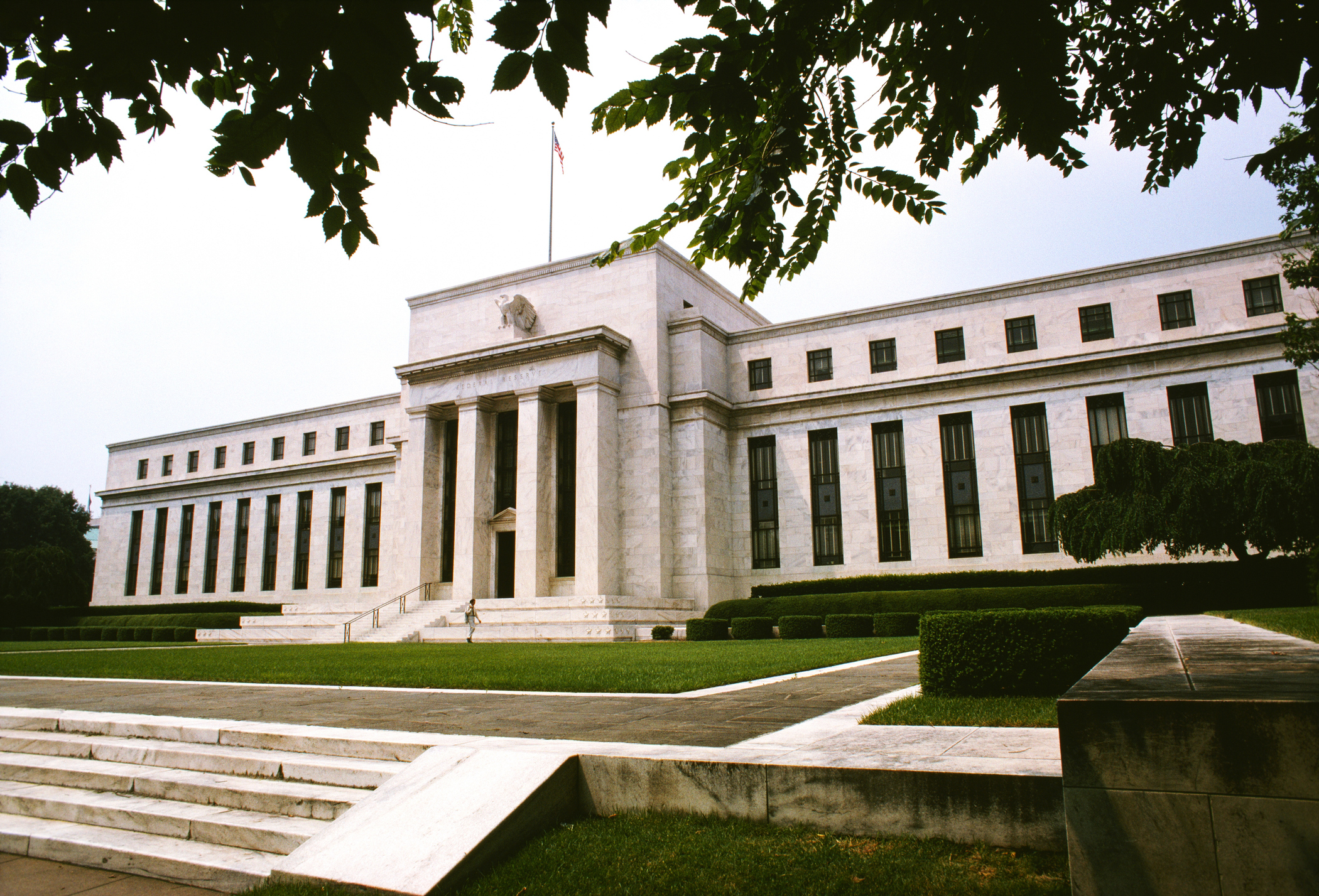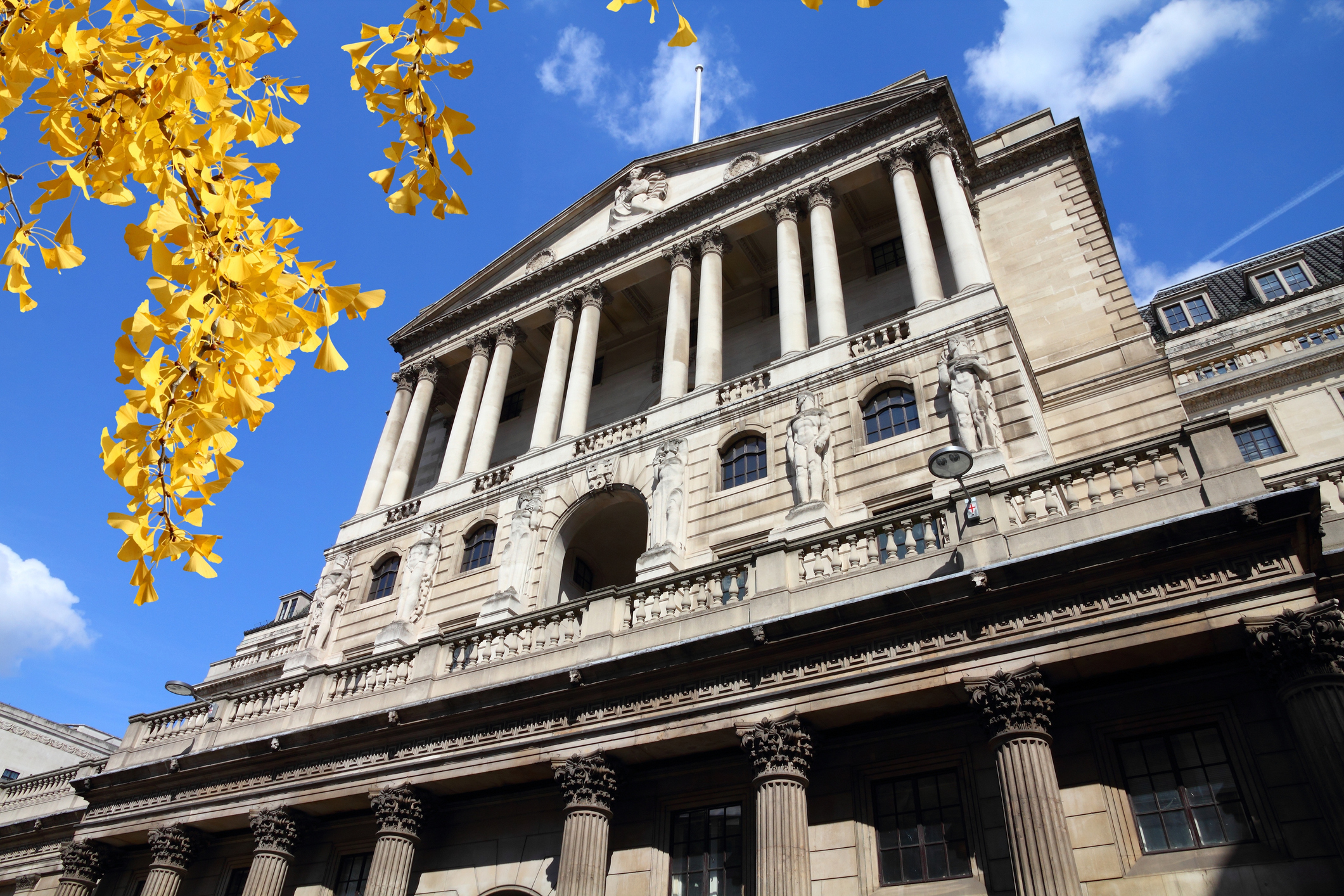Why is China easing monetary policy?
The world’s central banks are starting to talk about pumping a little less money into their economies. All except one: the People’s Bank of China is now loosening monetary policy again. John Stepek explains why.


Central banks around the world have been pumping lots of money into their economies to keep them afloat during lockdowns.
Now that we are (hopefully) edging closer to the end of lockdowns, central banks have been murmuring about not printing as much money.
Or at least, that’s what most central banks have been saying.
MoneyWeek
Subscribe to MoneyWeek today and get your first six magazine issues absolutely FREE

Sign up to Money Morning
Don't miss the latest investment and personal finances news, market analysis, plus money-saving tips with our free twice-daily newsletter
Don't miss the latest investment and personal finances news, market analysis, plus money-saving tips with our free twice-daily newsletter
But one rather important one has just loosened monetary policy yet further – the People’s Bank of China.
China’s economic recovery is bumpy rather than faltering
At the end of last week, the Chinese government – via the People’s Bank of China, the central bank – made it easier for banks to lend more money, by reducing the amount they need to hold in reserve.
To use the technical terminology, the Chinese central bank cut the reserve requirement ratio (RRR) for banks by 50 basis points (or 0.5 of a percentage point), starting from 15 July. In all that should enable banks to release another $150bn into the economy.
This rather stands out in a world where the rest of the major central banks are at least thinking about tightening monetary policy, not loosening it further. It’s also a little unnerving given that we’re meant to be having a rampant post-pandemic recovery.
If the world’s second-biggest economy is already needing to loosen monetary policy again, what does that mean?
Let’s try to unpack this and see if it’s anything we need to worry about.
Firstly, we need to remember that China went into this pandemic first and thus came out of it first too (notably before vaccines were developed, which is something we seem to be forgetting as we discuss our own release from lockdown).
So China has had a V-shaped recovery spurt. Now the recovery is slowing, and more quickly than many analysts had expected. This could at least partly explain the recent dip in commodity prices.
However, before we go too wild in terms of extrapolating this to all the other “V-shaped” recoveries across the world, it’s also worth remembering that China’s “first in, first out” status is a double-edged sword in a global economy.
It’s like trying to organise a party when all of your friends are stuck quarantining. Things might be fine in your house but your party isn’t exactly going to be raging when no one else can come.
Also, as Eoin Treacy points out on FullerTreacyMoney.com, a slowdown might also just reflect a drop in “demand for products associated with lockdowns” as other countries start to emerge from the pandemic.
The other thing about V-shapes is that they represent short, sharp rebounds. Once the rebound bit is done, the V-trajectory starts to turn into something else. That doesn’t mean it’s all over.
So it’s easy to read too much into these things, and as far as the global economy goes, I think there are just too many variables influencing the data. It’ll take a while before we see how this all turns out, and in the meantime, I still believe that logic suggests an overall arc pointing in the direction of longer-term strong recovery (with a lot of bumps along the way).
Yes, but why is China making lending easier?
So why is China cutting the RRR? As Julian Evans-Pritchard of Capital Economics points out, this is not necessarily a broad-based loosening of monetary conditions. “It is partly intended to offset tightening elsewhere”.
It’s more about shuffling the focus towards the more fragile parts of the Chinese economy and financial structure, “including the balance sheet weakness of highly-indebted firms”. In effect, it’s aimed at encouraging banks to cut borrowing costs for companies that might otherwise run into trouble.
As you’ve probably noticed, commodity prices have been spiking, or at least they were in the earlier part of the year. That’s put companies under pressure in terms of rising costs. So one argument is that, as Morgan Lau of Fidelity International tells Bloomberg, “the primary motivation for China is to support small and medium companies influenced by the spike in inflation”.
Meanwhile, China is trying to mature its financial system and make it more resilient and deeper. That involves making the system a bit more capitalist (ironically enough). This is why increasing numbers of companies have been allowed to go bankrupt.
If China wants to compete with the US on the economic and financial markets stage, it doesn’t have much choice other than to keep doing this. As Diana Choyleva of Enodo Economics describes it, China needs to “professionalise its capital markets”. But it also wants to maintain control over everything.
More than anything else, that means no sudden moves (notwithstanding the attempts to bring Didi to heel after it decided to list in the US in the face of opposition in China).
So overall, this looks like a move designed to ease potential strains in the system rather than evidence of something more serious (as yet). But it’s worth keeping an eye on. In any case, markets liked the move - they tend to like any sign that authorities might want lower rates.
And perhaps that’s the main thing to take from this right now. Markets seem nervous about growth or the recovery faltering. But China has just shown us what the response will be if it does: immediately reach for the rates lever. And until inflation makes it genuinely politically painful to do that, that’ll be the solution reached by central banks across the globe.
Anyway – if you’re in the mood for some thought-provoking big picture analysis on what you should really be worried about when it comes to China, listen to our latest podcast, where Merryn talks to historian Niall Ferguson about China, Taiwan and the US, among other topics.
Get the latest financial news, insights and expert analysis from our award-winning MoneyWeek team, to help you understand what really matters when it comes to your finances.
John Stepek is a senior reporter at Bloomberg News and a former editor of MoneyWeek magazine. He graduated from Strathclyde University with a degree in psychology in 1996 and has always been fascinated by the gap between the way the market works in theory and the way it works in practice, and by how our deep-rooted instincts work against our best interests as investors.
He started out in journalism by writing articles about the specific business challenges facing family firms. In 2003, he took a job on the finance desk of Teletext, where he spent two years covering the markets and breaking financial news.
His work has been published in Families in Business, Shares magazine, Spear's Magazine, The Sunday Times, and The Spectator among others. He has also appeared as an expert commentator on BBC Radio 4's Today programme, BBC Radio Scotland, Newsnight, Daily Politics and Bloomberg. His first book, on contrarian investing, The Sceptical Investor, was released in March 2019. You can follow John on Twitter at @john_stepek.
-
 Boost for over 100,000 families on Child Benefit as new HMRC payment system rolled out
Boost for over 100,000 families on Child Benefit as new HMRC payment system rolled outThousands of households will no longer have to pay the dreaded High Income Child Benefit Charge through self-assessment
-
 Are you being haunted by the ghost of Christmas past? How festive cutbacks could boost your long-term wealth
Are you being haunted by the ghost of Christmas past? How festive cutbacks could boost your long-term wealthThe average family spends around £1,000 over the Christmas season. Here’s how much you could have gained if you had invested some of the money instead.
-
 UK wages grow at a record pace
UK wages grow at a record paceThe latest UK wages data will add pressure on the BoE to push interest rates even higher.
-
 Trapped in a time of zombie government
Trapped in a time of zombie governmentIt’s not just companies that are eking out an existence, says Max King. The state is in the twilight zone too.
-
 America is in deep denial over debt
America is in deep denial over debtThe downgrade in America’s credit rating was much criticised by the US government, says Alex Rankine. But was it a long time coming?
-
 UK economy avoids stagnation with surprise growth
UK economy avoids stagnation with surprise growthGross domestic product increased by 0.2% in the second quarter and by 0.5% in June
-
 Bank of England raises interest rates to 5.25%
Bank of England raises interest rates to 5.25%The Bank has hiked rates from 5% to 5.25%, marking the 14th increase in a row. We explain what it means for savers and homeowners - and whether more rate rises are on the horizon
-
 UK inflation remains at 8.7% ‒ what it means for your money
UK inflation remains at 8.7% ‒ what it means for your moneyInflation was unmoved at 8.7% in the 12 months to May. What does this ‘sticky’ rate of inflation mean for your money?
-
 Would a food price cap actually work?
Would a food price cap actually work?Analysis The government is discussing plans to cap the prices of essentials. But could this intervention do more harm than good?
-
 Is my pay keeping up with inflation?
Is my pay keeping up with inflation?Analysis High inflation means take home pay is being eroded in real terms. An online calculator reveals the pay rise you need to match the rising cost of living - and how much worse off you are without it.
